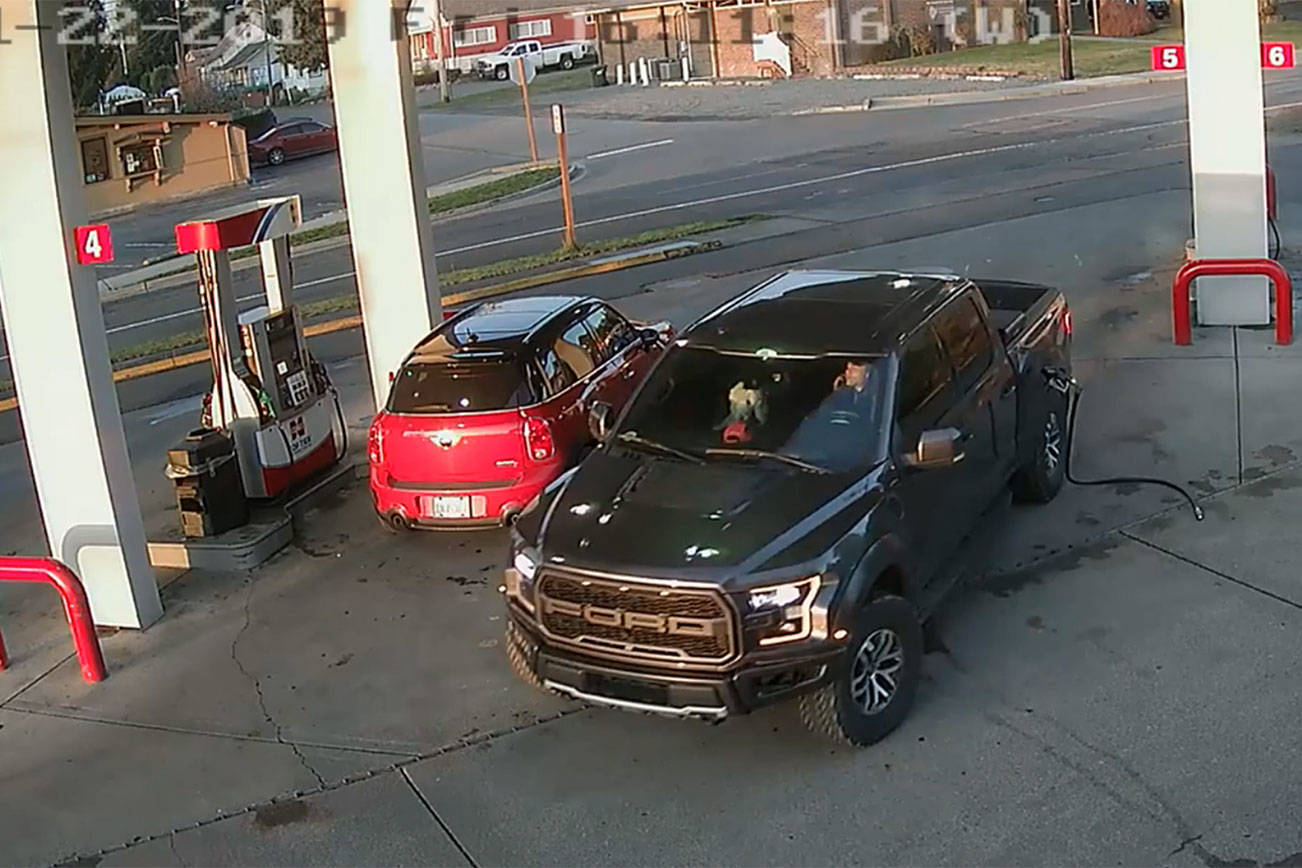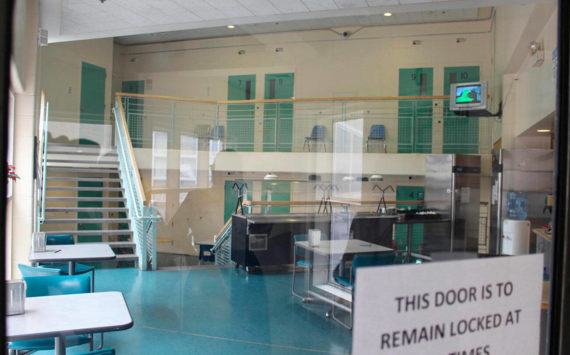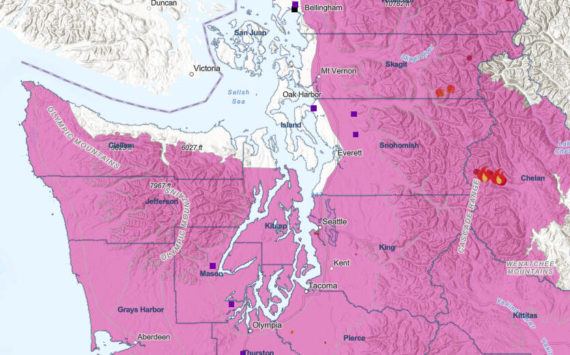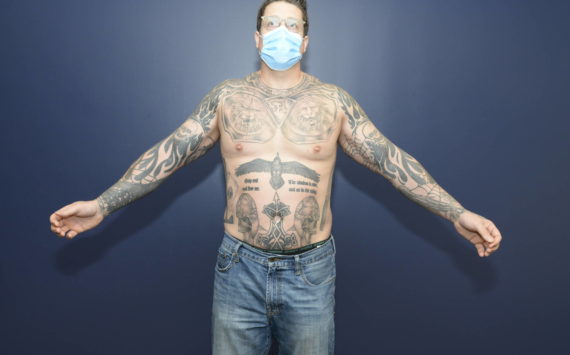The King County Office of Law Enforcement Oversight (OLEO) criticized nearly every decision law enforcement made in its systemic review related to the Nov. 25, 2019, shooting of Anthony Chilcott.
The OLEO report, released on Aug. 31, depicts a string of bad decisions and policy violations made by the two King County Sheriff’s Office deputies, George Alvarez and Josh Lerum, which needlessly escalated the situation.
Chilcott was wanted for vehicle theft. He was unarmed when Alvarez and Lerum shot and killed him, according to the OLEO report.
The King County Sheriff’s Office fired Alvarez prior to OLEO’s release of the report. Alvarez was a 21-year veteran of the sheriff’s office, according to the report.
The following information is taken directly from the OLEO report prepared by Katy Kirschner, Adrienne Wat and Liz Dop of King County OLEO.
The incident
On Nov. 22, 2019, Chilcott allegedly stole a 2019 Ford Raptor truck from a gas station in Black Diamond. Three days later, on Nov. 25, Alvarez and Lerum were wearing plain clothes while working in a leased, unmarked Yukon SUV without sirens or lights.
The two deputies received a “be on the lookout” advisory for the Ford Raptor and Chilcott when they saw the truck in question driving the opposite direction down Cumberland-Kanaskat Road in King County.
At 11:51 a.m., Lerum, who was in the passenger seat, reported via radio that he saw the Raptor. Behind the wheel of the Yukon, Alvarez pulled a u-turn to pursue Chilcott in the Raptor.
When the deputies caught up to the Raptor, Chilcott had pulled the truck onto the right-hand shoulder with his left-hand turn signal on, apparently to make a u-turn.
Before he could make the u-turn, Alvarez drove the Yukon up to the Raptor to block it from turning. There were two children and one adult witness about 100 feet from the two vehicles.
Because the Yukon was unmarked and the deputies were in plain clothes, none of the witnesses knew the vehicle was law enforcement. A witness who drove past the scene even called 911 because he believed it was a dispute between two civilian cars. It’s not unreasonable to believe Chilcott didn’t know the men were law enforcement either, the OLEO analysis said.
As Alvarez pulled the Yukon in front of the Raptor, Lerum flashed his badge and allegedly said “police, shut it down” or something to that effect. Lerum believed his window was rolled down.
Simultaneously, Chilcott turned the Raptor left, into the Yukon, and the deputies claim Chilcott rammed the Yukon. However, the report suggests Chilcott was actively making a u-turn when he hit the unknown vehicle that pulled up next to him, taking him by surprise.
Alvarez drove the Yukon into the Raptor, causing the Raptor to be stuck on large rocks. Both Alvarez and Lerum left their Yukon and drew their guns.
Lerum allegedly said “police, put your hands up” to Chilcott. The OLEO analysis suggests that because of the rapid succession of events, the noise of the Raptor’s engine and the lack of markings on the Yukon or the deputy’s clothes may have led Chilcott to resist those commands.
All of the civilian witnesses said the Yukon T-boned or hit the Raptor and was the aggressor in the situation. None of the witnesses knew the two men with guns were deputies.
Shortly after the deputies exited their vehicle, Chilcott attempted to reverse the truck, apparently to escape from the two men who were on either side of the truck. When he reversed, Alvarez held onto the side mirror and the truck travelled a short distance before getting stuck on the rocks again.
At that point Alvarez retrieved a sledgehammer from the Yukon and hit the driver’s side window, causing it to break. The tint film prevented the window from shattering. Alvarez and Lerum each had their guns drawn and attempted to pull Chilcott through the partially broken window with their free hands.
After their attempt to drag Chilcott out of the window failed, Lerum disengaged and went to the passenger side of the Raptor and smashed that window with the sledgehammer. That window did not fully break.
Alvarez still had his arm through the driver’s side window and pinned Chilcott to the driver’s seat. Chilcott motioned toward the center console, where the shifter is located in a Ford Raptor. In response to Chilcott’s motion, Alvarez pistol whipped Chilcott in the head with the muzzle end of his gun.
Chilcott allegedly grabbed Alvarez’s gun after being pistol whipped, and the OLEO analysis suggests this could have been to prevent Alvarez from hitting Chilcott again. They briefly struggled for the gun before Alvarez gained control and pistol whipped Chilcott again.
At that point Chilcott grabbed Alvarez’s arm, pulling him part way into the vehicle, and hit the accelerator. Seconds later, Alvarez shot Chilcott in the head. Following Alvarez, Lerum shot Chilcott from the other side of the Raptor.
Before Lerum found his radio to call in the shots fired, a Washington State Patrol unit had already arrived.
At 11:55 a.m., Lerum advised by radio: “Shots fired. Roll us aid and a sergeant.” From the time Alvarez and Lerum initially saw Chilcott in the Raptor, to when both deputies shot Chilcott in the head, less than four minutes had passed.
The OLEO analysis
From the actions of Alvarez and Lerum to the investigation that followed, the OLEO report criticized nearly every decision law enforcement made surrounding the incident. The analysis resulted in 23 policy recommendations for the King County Sheriff’s Office. Here are the main points.
• Tactics, planning and decision making: Alvarez and Lerum knew there was probable cause for Chilcott’s arrest prior to leaving their precinct and they left with the intention of looking for Chilcott, according to the report. The deputies’ lack of planning led to their poor decision making during the confrontation, the report said. The OLEO recommended creating clear policy advising when a deputy can take law enforcement action with and without pre-planning.
• Driving leased vehicles: The use of a leased, unmarked vehicle without lights and sirens created an unnecessary and highly dangerous situation, according to the report. Civilians may be more likely to act in self-defense if an unmarked car blocks their vehicle and two anonymous men with guns approach the civilian, the analysis said. The OLEO recommended the sheriff’s office make a new policy prohibiting deputies from taking law enforcement action unless there is a specific imminent threat to bodily harm.
• Plain clothes: Similar to the unmarked vehicle, the fact neither Alvarez nor Lerum wore their department-issued vests created confusion and a hazardous situation, according to the report. The report points out that their lack of vests limited Alvarez’s and Lerum’s ability to use less lethal force. At the time of the incident, the sheriff’s office already required plain clothes detectives to wear a uniform marked with police or sheriff when making an arrest or assisting in an investigation. Alvarez and Lerum violated this rule, according to OLEO. The OLEO recommended that the sheriff’s office should prohibit plain clothes deputies from taking law enforcement action.
• Muzzle strikes: Alvarez pistol whipped Chilcott in the face two times, and in doing so, Alvarez gave Chilcott access to the gun, increased the likelihood of a misfire — this broke department policy, according to the OLEO report. Alvarez claimed he had been in several classes where using “muzzle strikes” are a standard technique in situations where a suspect is fighting with an officer over a gun. Chilcott did not fight over Alvarez’s gun, nor did he have access to it until Alvarez pistol whipped him, the report said. Pistol whipping a suspect is not a King County Sheriff’s Office trained technique, according to the OLEO report. The OLEO recommended the sheriff’s office implement defensive tactics training and provide it multiple times a year.
• Administrative investigation: Alvarez and Lerum submitted compelled written statements 192 hours after the incident, but neither signed their name, according to the report. The report said a signature is necessary to the transparency of the investigation because it authenticates the statements as being true according to the author. The OLEO recommended requiring involved personnel to sign compelled statements or to document the personnel’s refusal to do so.
• Interviewing involved personnel: In addition to not signing their names, Alvarez and Lerum did not write their compelled statements 48 hours after the incident, which is the standard, according to the OLEO report. Instead, they waited 192 hours to write their statements. The OLEO pointed out there is no transparency as to how the statements are written, and because it is not an interview, the deputies can leave out critical information.
• Because of an Internal Investigations Unit investigation into the incident, the deputies were eventually interviewed eight months after the incident, the report said. According to the report, relying on written statements 192 hours after the incident and a recorded interview eight months after the incident raises concerns about the deputies’ ability to recall the events accurately.
• The OLEO recommended the sheriff’s office revise its investigative protocols so personnel are required to participate in in-person audio and video recorded interviews and that involved personnel are interviewed before the end of their shift after critical incidents occur.
Lack of protocols for investigation
I-940, an initiative that passed in 2018, established that protocols be put in place for an independent investigation when a law enforcement officer uses force that causes serious bodily injury or death, according to the report.
The Seattle Police Department, which operates in the same county as Alvarez and Lerum, investigated the incident, according to the report. The OLEO report found that the lack of I-940 protocols was an issue in the incident. For example, the Seattle police officers who investigated the scene didn’t take inventory of the items in the Yukon, according to the report.









